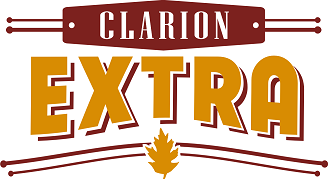The Keystone School Board this week gave its tentative approval to a $17,530,919 million budget for the 2022-23 school year, but stopped short of setting tax rates for the upcoming year. That decision will be made next month.
District Business Manager Vern Lauffer last month presented a draft balanced budget holding the tax rate at 51.587 mills. Since that session, the district learned its anticipated payment to the Riverview Intermediate Unit for special education will increase by nearly $300,000.
Lauffer again this month offered a proposed balanced budget, including the increased IU tuition, but warned the board it caused a reduction in the annual amount the board sets aside for capital improvement projects.
By doing so, the district has not raised real estate taxes for eight years and the district is debt-free.
“We’ll do some tweaking between now and (the next board meeting),” Lauffer said. “Those IU costs might come down. You can hold off on setting the tax rate until next month.”
But facing rising costs with nearly everything connected to operating a school district, board members indicated they understand a tax increase might be necessary.
“I think we have hit that point,” board member Dustin Swartfager said. “For the past 15 years we’ve kept everything up. Even with all we’ve set aside, we can’t (continue to plan for future projects without adjusting tax rates).”
Board member Greg Barrett agreed.
“I’d rather pay a small increase now than have to raise taxes to the (maximum allowed under state law) every year down the road,” he said.
Board member Ken Swartfager referred to the price inflation hitting the nation.
“We can’t deny the price of everything is going up,” he said. “The planning has to start now, just like before. It’s the same philosophy; we just have to carry on.”
Board member Dewayne Van Tassel said the philosophy referenced by Swartfager helped bring the district from a poor financial situation 20 years earlier to a solid foundation now.
“Just look at the capital projects we have been able to do without borrowing any money,” he said.
While no amount was pinned down, board members talked about a 1-mill increase.
“I don’t like it,” Swartfager said. “But I’m not opposed to it.”
Although board member Jason Say said it will be hard to ask property owners to pay more in these tough financial times, he believes “it’s responsible.”
A 1-mill tax increase would raise about $67,000 in tax revenue.
The board acknowledged this year’s homestead/farmstead tax relief for the district — $352,390. The payment last year was $279,590.
The homestead/farmstead exemption is a deduction from a property owners’ real estate tax bill funded by gaming taxes levied on casinos in Pennsylvania.
Lauffer said each qualifying homestead/farmstead property will be credited about $180 against their 2022-23 tax bill amount, about $40 higher than last year.
Lauffer said the increase in the tax credit total, about $72,800, covers the $67,000 a 1-mill tax increase would take out of property owners’ pockets.
However, Lauffer also acknowledged while the increase in tax credit might cover a 1-mill tax increase for the “average” property owner, any tax increase “will hurt.”
The current tax rate — 51.587 mills — means the school district levies a tax of $51.59 on each $1,000 of assessed property value.
The district also imposes a 300-mill occupation tax, an apparently unappealable, arbitrary tax based solely on a person’s job title with assessed values that can be decades old.
Other taxes include a $10 per capita tax, a one-half of 1% realty transfer tax and a one-half of 1% earned income tax.
On the revenue side, the district anticipates $5,438,769 in local revenues, including real estate, transfer taxes, occupation taxes and other taxes and interest earnings.
The district anticipates $11,569,606 in state revenue and $522,544 in federal funding.
All in all, the district expects $135,061 more in revenues than last year.
On the expenditure side, the district will spend approximately $12,286,355 on wages and benefits in 2022-23, an increase of $215,917 over last year.

